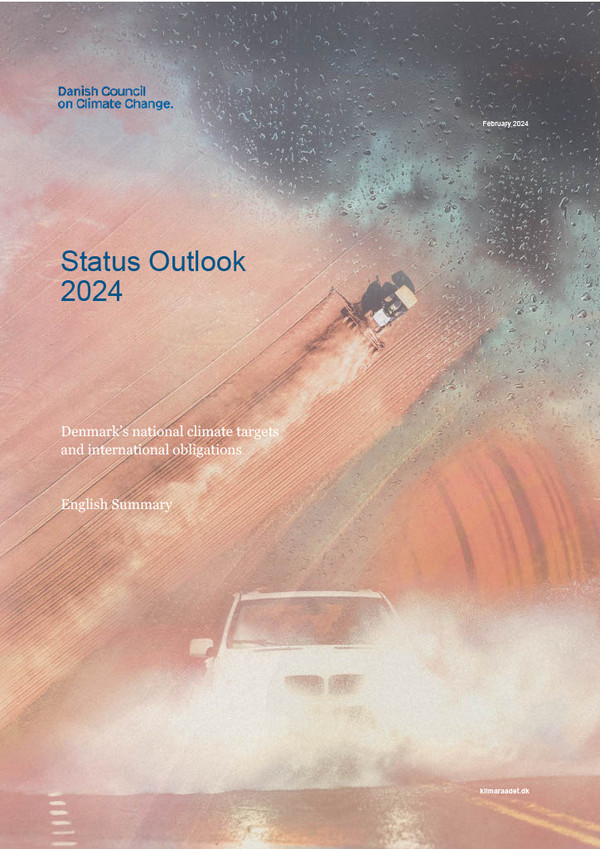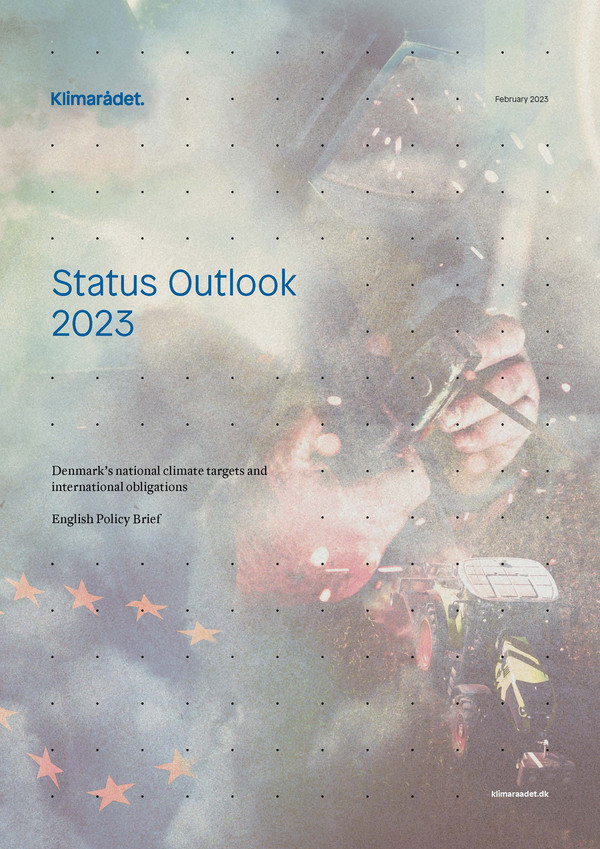
Known paths and new tracks to 70 per cent reduction

Preface
On 6 December 2019, a broad majority of the Danish Parliament (Folketing) signed an agreement on a new Climate Act for Denmark to replace the existing Climate Act from 2014. The new Climate Act sets a framework for Danish climate policy based on binding intermediate targets every five years towards the target of climate neutrality by 2050.1 The Act is expected to be passed in spring 2020.
Introduction, conclusions and recommendations
Denmark has a new climate target for 2030
By 2030, Denmark has to reduce its greenhouse gas emissions by 70 per cent compared to the level in 1990. The 70 per cent target and the 2050 climate neutrality target mark the first time Denmark has stipulated by law targets for total Danish greenhouse gas emissions. Thus, the targets represent a new direction for Danish climate policy.
Achieving the 70 per cent target by 2030, which is the subject of this report, will require substantial effort. In the 30 years after 1990, Denmark is estimated to have reduced emissions by approximately 38 per cent. This means, that almost half of the task has to be solved in the next ten years. We are therefore expecting considerable reduction efforts in the new decade, and these will impact most parts of the Danish society. The 70 per cent target is to ensure that Denmark becomes a frontrunner in the international climate mitigation efforts. Even though the target is demanding, previous calculations by the Danish Council on Climate Change indicate that 70 per cent in 2030 and climate neutrality by 2050 are not more ambitious than necessary. The target 70 per cent target corresponds to what is needed if Denmark is to contribute to limiting the global temperature rise to 1.5 degrees Celsius. The agreement on the new Climate Act emphasises the political priority for Denmark to work actively to meet this target.
One of the most important tasks of the Danish Council on Climate Change in regards to the new Climate Act is to advise the government, on how Denmark can best meet its national climate targets and international climate commitments. For this reason, in the years to come, the Danish Council on Climate Change will focus on how Denmark can achieve the 70 per cent target in 2030. This report is the first step in that process. However, the 2030 target should not be seen in isolation, and advice from the Danish Council on Climate Change will also consider the long term perspectives for climate neutrality by 2050. In the years to come, the upcoming Climate Act will commit the Danish Council on Climate Change to make recommendations for future climate efforts at least once a year, and to establish a catalogue of possible policy instruments over time.
This report illustrates a way to achieve the 70 per cent target, taking into account that Denmark will have to adjust the course along the way, as we learn more about costs and potentials. The road to 2030 must be cost-effective, but it should also lead us towards the long-term target of climate neutrality and it should consider so-called carbon leakage, where reductions in emissions from Danish territories lead to increased emissions in other countries. This report focuses on the transition elements which are the specific changes in production and behaviour that will lead the transition towards a society with fewer greenhouse gas emissions. The report also focuses on the political instruments that will realise the various transition elements.
The costs of achieving the 2030 target
There is no doubt that achieving the 70 per cent target will entail costs for Danish society, but it is unlikely that it will have severe impacts on the Danish Economy, if measures are implemented sensibly. A rough estimate by the Danish Council on Climate Change shows that the annual socio-economic cost of achieving the target will gradually increase through the 2020s and by 2030 reach DKK 15-20 billionn compared to a scenario in which Denmark does not introduce further initiatives than those already adopted. This cost corresponds to less than one per cent of Danish gross domestic product. Estimating the costs of such a major change in society as the 70 per cent target will always be associated with considerable uncertainty. The estimate by the Danish Council on Climate Change must therefore be considered with this general reservation. Similarly, not all positive and negative socio-economic aspects have been included in the estimate. For example, the possible distortionary costs associated with specific instruments such as taxes and subsidies have not been included. Conversely, the potential gains associated with the instruments, such as Danish businesses obtaining a leading position in the growing world market for green products have also not been included.
Up to one per cent of GDP is a large sum of money that requires ongoing political prioritization, but it does not threaten Danish prosperity. However, it is important, that we organize the climate mitigation effort towards 70 per cent and later climate neutrality as cost-effectively for the society as possible, ensuring that Denmark can be an example for other countries to follow. By showing that it is possible to carry out a well-planned transition without unduly large costs, Denmark could encourage other countries to raise their levels of ambition.
In addition to assessing the overall socio-economic costs, the challenge of carrying out a major transition should also be measured on other parameters. For example, the size of the substantial investments in new technology that have to be implemented over a short period of time, the impact on public finances or the extent of disparate economic burdens across businesses and citizens. These other aspects of the transition have not been analysed in depth in this report, which focuses more on pointing to cost-effective reduction potentials and policy instruments and thus on limiting the overall cost for Denmark for meeting the 2030 target.
The specific choices of instruments and funding will influence who is directly affected by the transition. Therefore, additional initiatives may be necessary to ensure the social balance mentioned in the proposal for the new Climate Act. However, cost-effective greenhouse gas reduction instruments should still be the basis to ensuring an appropriate and necessary transition. Furthermore, Denmark should also work towards the European Union as a whole adopting as ambitious common climate targets as possible, with accompanying instruments, as this will contribute to lower global emissions and it will reduce the costs for Danish companies and Denmark as a whole on the way to the 70 per cent reduction in 2030.
Two tracks towards the 70 per cent reduction
The report divides the transition and target achievement into two tracks. The first track entails intensified efforts within what Denmark as a society is already doing. This includes increased use of well-known transition elements focusing on technical reductions of greenhouse gas emissions, where green technology replaces or limits the use of black technology, but where we basically consume and produce more or less the same things as usual. This applies, for example, to replacing a petrol-powered car with an electric car or an oil-fired boiler with an electric heat pump. In this track, the emissions reductions have to accelerate now. This requires political implementation of specific policy instruments, such as changes in tax levels, and the track in this report is therefore referred to as the implementation track.
Parallel with this is another track that requires the development of new and less well-known transition elements, where untested technologies have to be brought into play and where the habits and consumption patterns of Danes will have to change more radically in a climate-friendly direction. This track is referred to as the development track, which emphasizes that short-term political focus should be on investing in strategic development and planning of how these transition elements can make the necessary contribution by 2030. Until 2030 and further toward 2050 the individual transition elements of the development track must continuously transition to the implementation track as the adjustment elements are developed, tested and commercialised, and as new instruments are applied to realise them. Both tracks are urgent and require a large number of political initiatives.
We only have ten years to reach the 70 per cent target, and efforts must also lead to climate neutrality by 2050. We have to implement and develop now.



